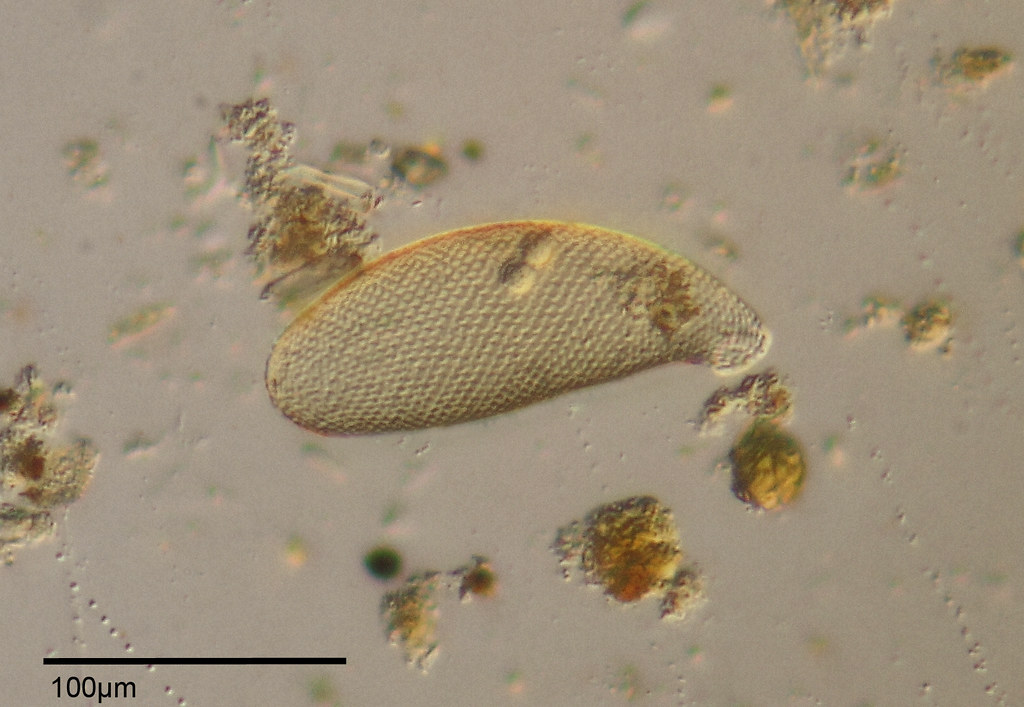
Environmental & Science Education
Edward Hessler
While reading The Amoeba in the Room: Lives of the Microbes by Nicholas P. Money (Oxford University Press, 2014) I learned something about Charles Darwin's voyage to which I'd never paid any attention, his collection of some dust which fell on his ship.
I loved Money's book. If you want to know more about what it means to be alive read this enchanting book. Microbes are us and much else.
While the H. M. S. Beagle was at anchor in the Cape Verde Islands, Charles Darwin collected samples of dust that had settled on the ship--he noticed everything and wondered about what he saw. He sent these samples to an Charles Darwin collected samples--he noticed everything and wondered about what he saw--and sent them to an expert on "infusoria."
In A Naturalist's Voyage Round the World: Journal of Researches into the Geology and Natural History of the Various Countries Visited by H. M. S. Beagle, Under the Command of Captain Fitzroy, R. N. from 1832 to 1836 (Henry Colburn, 1839) wrote about this dust event.
"Generally the atmosphere is hazy; and this is caused by the falling of impalpably fine dust, which was found to have slightly injured the astronomical instruments. The morning before we anchored at Porto Praya, I collected a little packet of this brown-coloured fine dust, which appeared to have been filtered from the wind by the gauze of the vane at the masthead. Mr. Lyell has also given me four packets of dust which fell on a vessel a few hundred miles northward of these islands. Professor Ehrenberg4 finds that this dust consists in great part of infusoria with siliceous shields, and of the siliceous tissue of plants. In five little packets which I sent him, he has ascertained no less than sixty-seven different organic forms! The infusoria, with the exception of two marine species, are all inhabitants of fresh-water. I have found no less than fifteen different accounts of dust having fallen on vessels when far out in the Atlantic. From the direction of the wind whenever it has fallen, and from its having always fallen during those months when the harmattan is known to raise clouds of dust high into the atmosphere, we may feel sure that it all comes from Africa. It is, however, a very singular fact, that, although Professor Ehrenberg knows many species of infusoria peculiar to Africa, he finds none of these in the dust which I sent him. On the other hand, he finds in it two species which hitherto he knows as living only in South America."
In addition, Money mentions air samples collected by Charles Lindberg at the request of U. S. Department of Agriculture F. C. Meier who was interested in the spread of cereal rusts. The results were published in a paper by Fred C. Meier and Charles A. Lindberg in "Collecting Micro-Organisms from the Arctic Atmosphere" published in The Scientific Monthly,
Colonel Lindberg designed the collecting device known as the "sky hook." The collecting surfaces were petroleum coated glass slides, twenty-six of which were ultimately exposed to the atmosphere. Mrs. Lindberg flew the ship when her husband was occupied "with manipulation of an instrument new to transatlantic airplanes."
In addition to the findings, the paper contains handwritten field notes and drawings by Lindberg and a description of the construction of the "sky hook." This is a fascinating paper.
I loved and strongly recommend Money's book. Our attention is mostly to macrobiota--the big things many of which are soft and fuzzy or are beautifully dressed plants. But microbiota as charismatics miss our gaze and attention.They do the biosphere's heavy lifting. If you want to know more about what it really means to be alive read this enchanting book. You are likely to wonder what we mean by the idea of "self." And the tree of life appears to be more like a very tangled network.
I'd be remiss if I didn't mention that each chapter begins with an epigraph from John Milton's Paradise Lost. Did you know that Charles Darwin included this in his library on H. M. S. Beagle? I didn't. Dr. Money has chosen these carefully. Each is tightly bound to the content of the chapter, indeed informs it in the way of a poet. Money notes that both Milton and Darwin stood in awe of "the wonder of life."
Reading poetry eluded Darwin following his return to England. Late in life Darwin wrote about poetry and music and a regret. The following passage from a letter to a friend is found in Charles Darwin: His Life Told in an Autobiographical Chapter & in a Selected Series of his Published Letters edited by his son, Francis.
"Up to the age of thirty, or beyond it, poetry of many kinds, such as the works of Milton, Gray, Byron, Wordsworth, Coleridge, and Shelley, gave me great pleasure…But now for many years I cannot endure to read a line of poetry;…My mind seems to have become a kind of machine for grinding general laws out of large collections of facts…and if I had to live my life again, I would have made a rule to read some poetry and listen to some music at least once every week…The loss of these tastes is a loss of happiness, and may possibly be injurious to the intellect, and more probably to the moral character, by enfeebling the emotional part of our nature."

 CGEE Student Voice
CGEE Student Voice
No comments:
Post a Comment